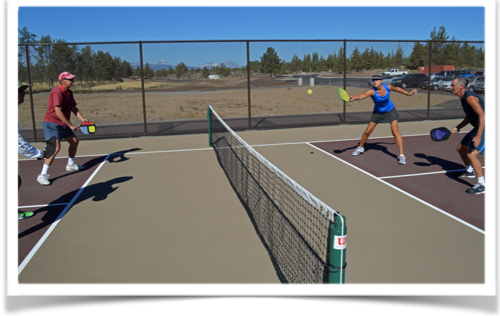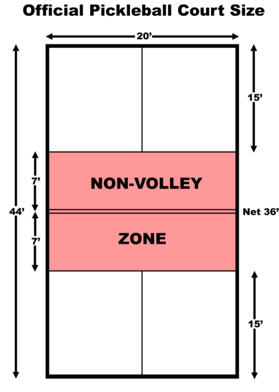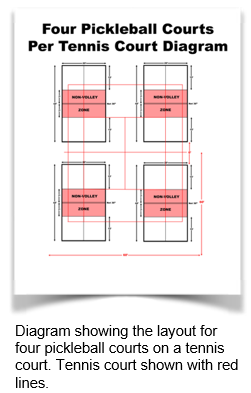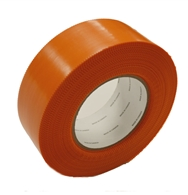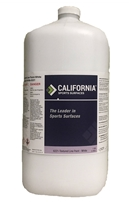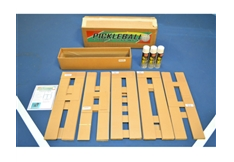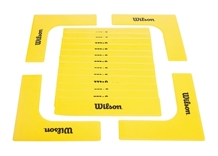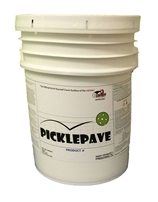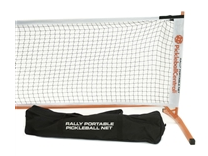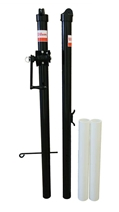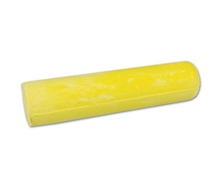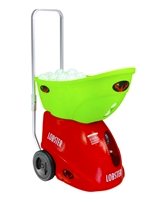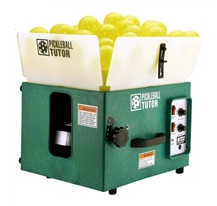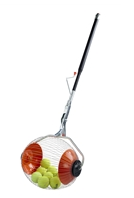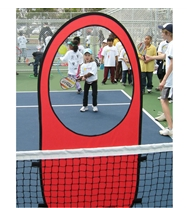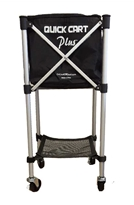The Definitive Guide to Pickleball Court Construction
As the baby boomers started trickling into retirement a few years ago, something explosive began in the world of pickleball. Now with that trickle in full flood, pickleball is one of the fastest growing sports in America. According the USA Pickleball Association,(www.usapa.org), last year alone over 1,000 new places to play pickleball were opened nationwide. If you or your community haven't gotten on the bandwagon yet, it’s time to make it happen.
Several years ago, one of our co-founders wrote an article for the USAPA on how to convert underutilized tennis courts into pickleball courts (
click HERE to download David's Underused Court Guide). The article below will address the broader issues of setting up new pickleball courts.
Whether you're interested in setting up a simple court at home, repurposing an underused basketball or tennis court or helping to bring your community a multi-court complex, this guide is intended to help you through each step of the process. We’ll start with the basics of court construction so that if you’re new to the game you can get yourself started as quickly and inexpensively as possible.
Ready to upgrade your playing surface? We’ll walk you through the process of transforming some underutilized spaces almost every town has. Does your community already have a strong and growing pickleball club? Sounds like you’re ready to start working with your local Parks & Recreation Department to find a dedicated space for multiple courts, perhaps with some lighting for those short winter days.
Cost ConsiderationsThe costs of pickleball court construction vary widely depending on your vision. On the low end, to get started with a simple home set including a portable net, 4 paddles, balls and a roll of court tape, you’ll be looking at roughly $200 - $400.
On the high end, you could work off of the example set by the pickleball club of Bend, OR, which recently raised close to $300,000 for a new 8-court complex complete with lighting for evening play and stadium seating for tournaments.
Between the $300 starter set and the $300,000 multi-court community complex is where most folks will fall. Here’s a rough cost breakdown:
- Net/Court Tape - $300
- Court Resurfacing - $3,500 - $5,000
- New Court Construction
- Basic ($10,000 - $15,000)
- Basic plus lighting and fencing - $20,000 - $35,000
- 8-Court Community Complex with fencing but no lighting - $110,000 - $150,000
- 8-Court Community Complex with fencing, lighting, and stadium seating - $300,000 and up.
Whatever your budget, pickleball is an easy sport to get into, and an even easier sport to love.
- Noise - Are your neighbors, homeowners association or community at large all right with a court or courts going in? A growing number of communities have started to deal with complaints about pickleball noise. See: GV News and The Wall Street Journal. A noise reducing option is highlighted below.
- Orientation - Where does the predominant light come from on your site? Shade? Wind? What time of day will you typically be playing? All of these factors should be considered when you’re determining the orientation of your court(s). The USAPA recommends a north-south orientation.
- Court Color - Regardless of the surface you choose for your court, you will have your options of color schemes. To play around with different color options click here: Court Color Tool
- DIY vs Professional Contractors - Putting in a basic court with an existing pad is a relatively easy endeavor that almost anyone can do. With the right tools, you could even put in your own permanent nets and paint a nice court. But if you’re looking at resurfacing or building a new court, it’s worth the extra cost to have a professional do it right. They’ll not only warranty their work in most cases, but they’ll also help ensure that your new court is up to code for your community.
Court Specifications
Pickleball began as a backyard creation in 1965 when a group of friends couldn’t find the shuttlecock to play badminton. Over a few days of tinkering, the creators worked out equipment kinks and rules. They dropped the badminton net to 36”, built some basic paddles out of plywood and used a wiffleball. If you have a paved, flat driveway or an old asphalt basketball court, then you’re ready to slap some lines down and get playing.
An official pickleball court is 20 feet wide by 44 feet long. You’ll want to leave room on the sides and ends for running off court after playing a ball, so the recommended playing area is 34 by 64 feet. If converting tennis courts, four pickleball courts can fit in the same area at dimensions of 30 feet by 60 feet (see diagram below). If you’re setting up your court indoors, it’s recommended that you have at least 18-20 feet of height to the light fixtures.
If you're installing permanent nets you'll need to decide what size net you'd like to purchase. Regulation nets should all be positioned so that they're 36' high at the sides and 34' in the center of the court, however when it comes to a net's actual dimensions, products come in either a 31' height or a full 36 inches. If you want to be able to roll a pickleball underneath the net, go with the shorter 31' option, otherwise the 36' net will prevent balls from crossing beneath.
Supplies You’ll Need:
- A spool of string or a carpenter’s chalk line to mark off initial lines before permanently marking them.
- Tape Measure
- PicklePave (If surfacing)
- Court Tape ($8 - $21 depending on type/durability for a 200-foot roll) or line marking paint ($45.99 per can)
- It's important to test a small portion of your court to see how it reacts to the tape you've selected before lining it completely. Most tape will leave a small amount of residue, and while this is normally a nonissue as it can be wiped away with soap and water after use, there is a risk that tape can cause permanent discoloration.
OR
*If converting a local basketball or tennis court, or even putting lines in a neighborhood cul-de-sac, you’ll want to make sure to get permission from your local Parks & Recreation Department and/or the neighborhood homeowners association first.
Installing a Court
Step 1: After selecting the area that you want to put the court in, tape the end of your string to the ground.
Step 2: Measure out 20-feet in as straight of a line as possible. Pull the string taught and tape the end to the ground.
Step 3: At a right angle to your second corner, measure out 44 feet and tape that end to the ground, (a large carpenter’s square can come in handy here).
Step 4: Repeat Step 2 at a right angle to your last corner and then repeat step 3 at a right angle to that corner. (In measuring your final 44 foot section you may realize that you’re off by a few inches, in which case you’ll need to adjust the positioning of the previous corners to fix your angles).
Step 5: Once you have four square corners and the distances accurate, use your court tape or line spray and go over the top of your new rectangular line. Now that you have the basic outline in place, setting up the rest of the lines will be easy.
Step 6: Measure 22 feet from the end line and set a net post up. From the opposite end corner do the same and set up your net.
Step 7: From each corner measure 15 feet towards the net and make a mark. Tie a line between the marks and paint or tape over it; this is the kitchen line.
Step 8: Measure in 10 feet on your kitchen line and make a mark. Do the same on each end line. Tie a line between the marks and paint or tape over it.
Step 9: Start playing pickleball!
You may want to include some helpful accessories and training aids in your plans so that drilling, games and clean-up go extra smoothly once your court is complete. We recommend the following:
If doing it yourself isn’t your style, or if you have a pad that needs to be improved before playing on it, call your local sports court surfacer and they can paint professional lines or resurface your existing pad to your specifications. Resurfacing costs will be specific to your court site, but generally will range between $3,500 - $5,000.
Another option for your court surface is a tile court system such as VersaCourt. Some players don’t like the way the ball bounces on a tile court system, but we’ve gotten fairly good reviews about them. The primary benefit of a VersaCourt system is that its design drastically reduces the impact on joints and the lower back. It’s grippy surface reduces the risks when lunging or jumping for balls. The added safety and reduced wear and tear on your body from a VersaCourt system will cost approximately $5,000 - $8,000. We recommend that you use a ball that is designed for use on hardwood or cement like the Onix Pure 2 or Fuse.
Working with a Contractor
But what if you don’t have a big, flat driveway? Or the local tennis club doesn’t want to share their courts with you and your group of picklers? Perhaps it’s time to call your local concrete contractor and sports court surfacer. We talked to Jason Black at Cascade Sports and Tennis Court Surfacing, about the costs and steps of putting in a new court or resurfacing an old one. Jason and his team surfaced the 4 courts at our Kent, Washington headquarters and did a fantastic job.
Jason recommends calling up a concrete contractor or landscape architect first and getting a quote from them. Pouring a new court varies dramatically in cost depending on the site you’ve selected for your court. Variables such as drainage, excavation, grading and site layout will affect the cost per square foot. You’ll also want to look into your community’s regulations regarding drainage. Some areas require a certain amount of drainage per lot, which your house and any other structures will count against. Do you have enough drainable space to put a new concrete pad? Do you have room for parking?
For a minimum of a 1,500 square foot pad, the price could vary from $8,000 - $35,000. Asphalt is cheaper to pour, but the surfacing costs are higher because there’s more air pockets to fill. Contractors most likely will not give you a quote over the phone; they’ll need to come look at the site to give you an estimate.
Once you’ve got your estimate and a trusted contractor, that’s when you call your local court surfacing company and talk to someone like Jason. Your court surfacing company will contact the concrete contractor before they pour the slab and make sure they pour the pad properly. It is imperative that the slab is poured specifically for court construction.
Jason emphasized three important points in dealing with your concrete contractor:
- Insist on a medium broom finish;
- A vapor barrier to help with proper drainage is a must to insure the longevity of your court;
- Make sure the contractor uses zip strips in forming the seams between sections of the pad. If you look at most patios or sidewalks you’ll notice a roughly 1/2 inch gap between sections, which would have to be filled and patched before a court surface was put down. Patches wear down much faster than the rest of your pad. On a new pad, nobody wants a patch!
“It kills me when people pour their expensive pad and the concrete guy says a vapor barriers or zip strips aren’t necessary,” Jason said. “It has to be poured specifically as a court, not as you would pour a patio or sidewalk, otherwise folks end up having to patch their brand new pads to make them work as courts.”
A couple of other points you’ll want to address with the contractor is whether or not you want permanent net posts installed, if you want fencing around the court and if you want lighting. If so, all three will need to take place with the pour.
Once you’ve got your pad poured to the exact specifications you need, it will take 28-days for the concrete pad to cure before a court surface can be applied; 14 days in the case of asphalt. Once it’s cured, it will take only about 3 or 4 days, sunshine dependent, for a company like Cascade Sports and Tennis Court Surfacing to finish off your new court. For a brand new court at 1,500 square feet, the cost for surfacing will be about $3,500 - $5,000, (a bit cheaper for resurfacing as less coats of acrylic are necessary).
“We start by filling in any seams or imperfections the concrete contractor may have left,” Jason said. “We apply an adhesion promoter, which has to be done quickly but is painstaking work. We get that down and then have to get the first coat of Acrylic down within two hours. For every 30 gallons of the acrylic paint, we mix in 300 lbs of sand. This fills in all the cracks and air pockets and gives your court that nice textured surface.”
The first coat dries in about an hour and they scrape all the sand that hasn’t gone into any cracks back off (almost all of it). The acrylic has to cure for about an hour before a second coat can be applied.
Next comes the surface paint, which is at least a two day process with new courts as two coats are necessary. This is also a bit weather dependent for outdoor courts as the product requires direct sunlight to dry properly.
“We always try to put the second coat on in the morning, so I can watch it dry and make sure the sun hits the whole court,” Jason said. “If you’ve got one corner where the sun isn’t hitting, it won’t dry consistently and cure properly.”
Once the second coat has cured properly, court lines are painted and not long after you’re ready to break in your new pickleball court! Invite your friends over and before you know it pickleball will be growing rapidly throughout your community.
Building a Community Court Complex
Now that you’ve been helping grow the sport of pickleball in your community by modifying existing courts, working with the Parks & Recreation Department and even building your own backyard court, perhaps it’s time for a dedicated multi-court complex. There’s a lot of work and organization that goes into getting to this stage, but if your group of picklers has the momentum going, it could be time to start the process.
To provide us with an example of how to get this stage of growth going, we talked to A.J. Fraties, President of the Bend Pickleball Club. From humble beginnings, the Bend Pickleball Club has successfully raised over $110,000 and secured matching funds from the Bend Parks & Recreations Department to build an 8-court complex dedicated solely to pickleball. After those courts were finished in the summer of 2014, they quickly received a private donation of $250,000 to build another 8-court complex complete with lighting for evening play and stadium seating in order to host tournaments.

“In-kind donations from local contractors was an important part of our overall fundraising efforts,” A.J. said. In exchange for name plaques at the entrances to courts and banner advertising at tournaments, the Bend Pickleball Club received in-kind donations from a handful of local contractors. Whether it was to help with the concrete pad, painting the courts, installing the fences or putting in benches, the Bend Pickleball Club left no stone unturned in approaching local business sponsors.
The overall construction process is the same for a multi-court system as it is for a single court, just on a larger scale. One aspect to consider though are ball barrier fences between the courts. This is just a 4-foot fence, with padding, to prevent balls going into the courts of other players.
“We had the benefit of a working with a Parks & Recreation Department that gave us a dedicated site with infrastructure already in place,” A.J. added, while discussing the paved parking area and restrooms. “We didn’t have to raise money for that, which helped a lot.”
With a strong and growing pickleball club, the support of your local Parks & Recreation Department, and some support from local businesses, you can have your multi-court complex ready for tournaments.
